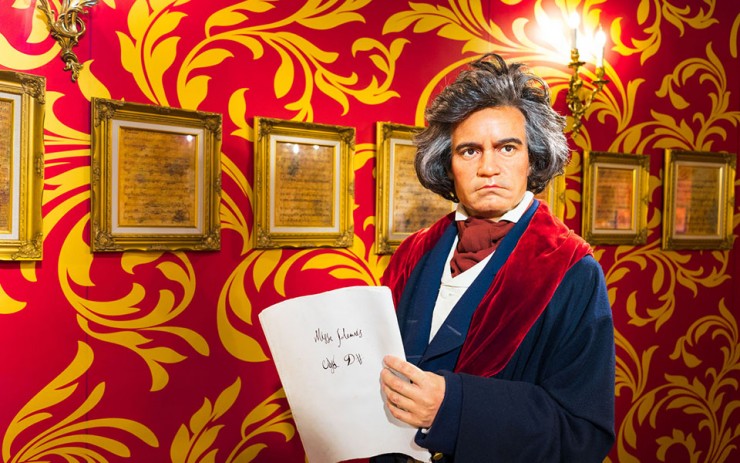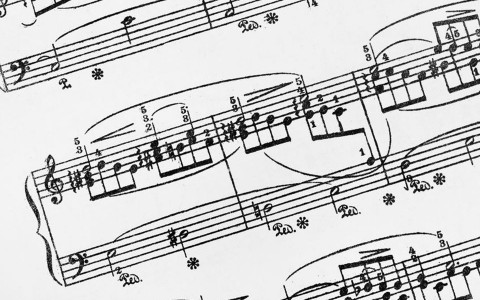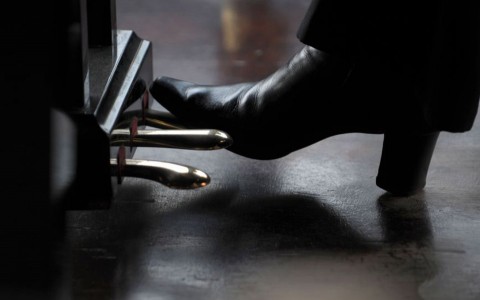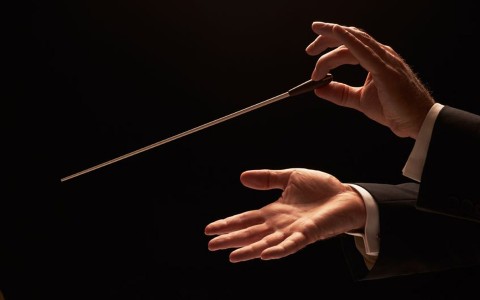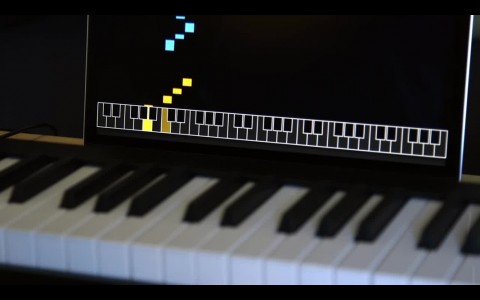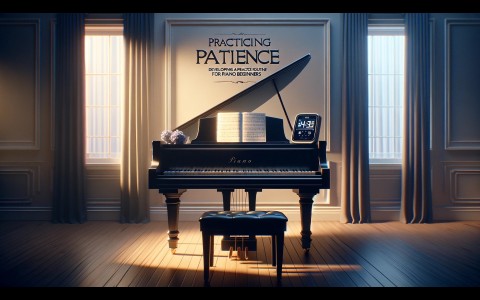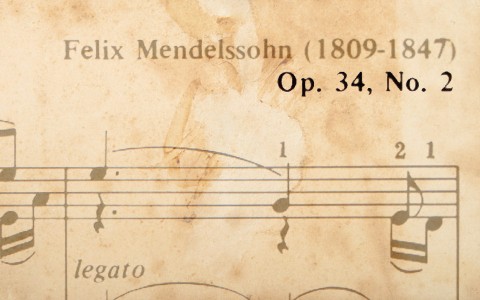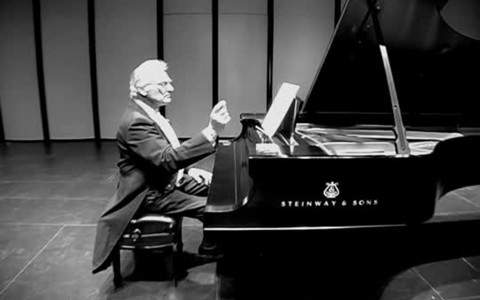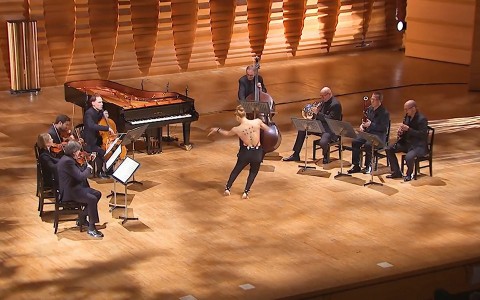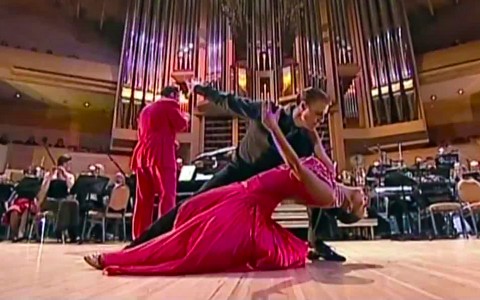1. Introduction
There is no doubt that Beethoven was a great composer. The only doubt comes when one asks if the latter is the greatest composer. Indeed, Beethoven is part of all the formidable “cliques” of music - The Holy Trinity (Bach, Mozart and Beethoven) and The 3 B’s (Bach, Beethoven and Brahms). It is safe to assume that it was he who laid the bridge of a new era of music - The Romantic period (although one could also argue that it was Schubert but that is for another occasion).
One instrumental development in Beethoven’s reign was the development of piano music and hence, the development of his piano sonatas. It is in my opinion that it is in these 32 (or 35 counting those unpublished) that we see a beautiful series, each sonata carrying a crucial role in the evolution of music. And if we ever compare the 1st and 32nd sonata he wrote, it would seem that 2 different people have composed them.
Hans Von Bulow, a pupil of Liszt (who in turn was a pupil of Czerny, who in turn was Beethoven’s pupil) championed these works as "The New Testament" of music, with "The Old Testament" being Bach’s Well Tempered Klavier.
Every renowned pianist has either performed or recorded some, if not all of the 32 sonatas. It is a humongous achievement for one to have mastered the entire sonata cycle. The underlying emotions and detail embodied within each sonata, coupled with numerous technical challenges and displays of virtuosity is simply too much for a charlatan such as myself to handle.
2. On the General Life of Beethoven
Beethoven led a tragic life (unsurprisingly, so did many other composers). Born in Bonn, Germany in 1770 he was a child with apparent music talent, he was often abused, physically and verbally by his father (often in drunken rage) who yearned for him to match the talent of Mozart.
In 1792, Beethoven moved to Vienna to study with Haydn and it was during this period that he established himself as a virtuoso pianist and a brilliant improviser, having a reputation of ‘a giant among pianists’. His pupil, Carl Czerny, remarked that, ‘He was the greatest sight-reader of his day, even of orchestral scores’.
Czech composer Vaclav Tomasek once exclaimed, after hearing Beethoven playing in Prague: ‘Beethoven’s magnificent playing and particularly the daring flights of his improvisation, stirred me strangely to the depths of my soul.’ With his fabled ability, he attracted a considerable number of patrons (Prince Karl Lichnowsky, Count Waldstein etc.)
However, despite a rather successful career, there were often more setbacks. Throughout the rest of his life, all of Beethoven’s marriage proposals were rejected, and it was this bitterness, this devastation that fuelled his genius to write the most divine, beautiful; music the world has ever seen (except that complete sham of a story of the A minor Bagatelle known to most as “Fur Elise”).
His circle of friends was shoddy, plagued by quarrels and arguments and his blatant display of arrogance. It was said that after a quarrel with Prince Lichnowsky, he wrote to him: ‘Prince, what you are, you are by an accident of birth; what I am, I am through my own efforts. There have been thousands of princes and there will be thousands more; there is only one Beethoven!’
His fiery temperament did not just affect his relationship with his friends, but with his family too. Beethoven fell out with his brother over his brother’s choice of spouse and fell out with his nephew (Beethoven was his guardian) whom he deeply cared about.
Perhaps the biggest blow to him was his gradual fall to deafness. From about age 27, Beethoven’s hearing began to fail, and during his last 10 years, he was almost totally deaf. The cause of his deafness is usually attributed to a condition known as otosclerosis, a hereditary condition where the cartilage opening of the ear turns to a bone. The same condition is known to cause the deterioration of the sufferer’s mental health, hence explaining his temperament and episodes of severe depression. Beethoven died in 1827 and a funeral was held 2 days later, attended by 20,000 Viennese citizens.
3. On the categorization of his Sonatas
Liszt believed that Beethoven’s works could be divided into 2 phases: One where Beethoven modeled his works after the music composers and the other where his musical invention required new means of expression, and thus resulting in a new style of music. But, the most “generally” accepted way of dividing Beethoven’s work would be the division to: early, middle and late. Why? This is so as this approach is much more accurate than Liszt’s division. Similarly, in the early stage, Beethoven still gained inspiration from earlier composers. In the middle stage, we can see his music deviating from the norm with experimentation on new textures, new forms, and ‘new means of expression’. And in the late stage, we see the firm development of a new style of music.
4. On the Early Sonatas
Beethoven’s early sonatas are his attempts to come to terms with the regular structure of a sonata. As such, from this group of sonatas, one would be able to identify the influence of Haydn and Mozart. One principal teaching of Haydn is the element of surprise, a technique Beethoven used throughout his entire career as a composer. The most common method to implement the element of surprise would be the use of sudden dynamics. This technique is most evident in the 1st movement of his Sonata in C minor Op.10 No.1 where the pattern of a sudden sforzando (sf), followed by a piupianissimo (pp) is regularly peppered throughout the piece.
4.1 Opus 2 No.1 Sonata in F minor
This is the 1st Sonata that Beethoven has published. Homage to Haydn is clear as the entire Opus 2 is dedicated to the latter. However, this sonata already has a clear distinction from that of Haydn and Mozart - It has 4 movements as opposed to the 3 movements Haydn and Mozart usually wrote (surprisingly, most of the sonatas in this category have 4 movements).
The 1st movement is typical of the Viennese Classical Style, where the main melody is the basic sustaining element of the entire piece with relatively simple accompaniment (standard figuration of Alberti base). Moreover, the expression in the 1st movement is rather static with the use of gradual or progressive dynamics.
The 2nd movement is perhaps an homage to Mozart. Here, Beethoven attempts to imitate the richness of the tone of most of Mozart’s Andante movements in his Sonatas.
Aside from these influences, I would like to pay special attention to the last movement. In this movement, we get a short glimpse of the large capacity of expression in future Beethoven works - the fiery Alberti base accompaniment coupled with the use of the pedal allows one to express a variety of emotions. The level of virtuosity here - quick arpeggios in the left hand and thunderous chords of the right hand, is the tip of the ice berg of what Beethoven had in store in terms of technicality for the piano.
4.2 Opus 2 No.3 Sonata in C major
I think it is in this sonata, especially in the 1st movement that we truly see a deviation from the music of Haydn and Mozart. The opening of this Sonata, consisting of just thirds seems deceptively simple to play. In fact, this passage is infamous amongst pianists as tricky to master.
Famous pianist Arthur Rubinstein is known to use the opening of the Sonata to test new pianos. Beethoven most likely intended this piece to be performed in a concert hall rather than a salon as it contains many passages of virtuosity scales in octaves, arpeggios, difficult trills, awkward hand movement and even a cadenza, which has never been seen in a sonata (usually only present in a concerto).
4.3 Opus 7 Sonata in E-flat major
I believe that out of all the sonatas in this category, this sonata is the most challenging one of them all due to its length as well as technical difficulties (repetitive notes, octave tremolo in the right-hand). It is the 2 nd longest sonata Beethoven has ever written (the first being the HammerKlavier).
This sonata was probably very important to Beethoven, considering that it was nicknamed “Grand Sonata” (however it is unsure if he gave the name) and the fact that the entire opus is dedicated to it.
The most striking section of the entire sonata would be the Minore section of 3rd movement (The Minore begins at 19:18 of the recording below). The section here presents a new texture, never seen or heard in the works of Haydn or Mozart. And it is this texture that one can exploit to bring up emotions of rage, bitterness in this work.
4.4 Opus 10 No. 2 Sonata in F major
This sonata is an absolutely delightful composition, for which Beethoven has a special affection to. However, it has been unduly neglected. A different mechanism for the element of surprise is used throughout the sonata - through unexpected chord progressions and modulations.
The 2nd movement however, replaces the conventional Minuet and Trio with a Scherzo - a move that Beethoven would employ in his future sonata. Beethoven disliked the structure on a Minuet and Trio (as opposed to Haydn who composed many of them) and preferred the more upbeat and “joke-like” characteristic of a scherzo (strangely, it has almost the same structure as a Minuet and Trio).
However, I think the most interesting movement of this sonata would be the 3rd, where we do get a glimpse of Beethoven’s musical invention. Here, he attempts to combine fugal texture (polyphonic texture) with the sonata form which I believe Haydn and Mozart never employed.
4.5 Opus 13 Sonata in C minor “Pathetique”
Revolutionary. With this sonata, Beethoven’s new path is forged. “Pathetique” or emotional best describes the 1st movement. It is in this piece where Beethoven first used an introduction to the first movement of the piece.
The beginning chord of the Grave introduction resembles that of requiem bell and the pause following the next note, allows the overtones of the chord to fade away; sorrow. Then, there is a sudden change of scene. A beautiful singing melody, expressing signs of longing. Then a sudden change dynamics interrupts it signifying an internal emotional turmoil. This turmoil manifests itself after the introduction through the piece through the use of the tremolo octaves in the left-hand.
The 2nd movement is arguably, one of the most famous in all of piano literature. But Beethoven introduces something new here - a different texture through the use of the inner voice (or 3 rd voicing) which Mozart and Haydn rarely (or perhaps even none) uses. Here, we see a precursor to music of the Romantic period, for we should see this again in the music of Chopin and Mendelssohn.
